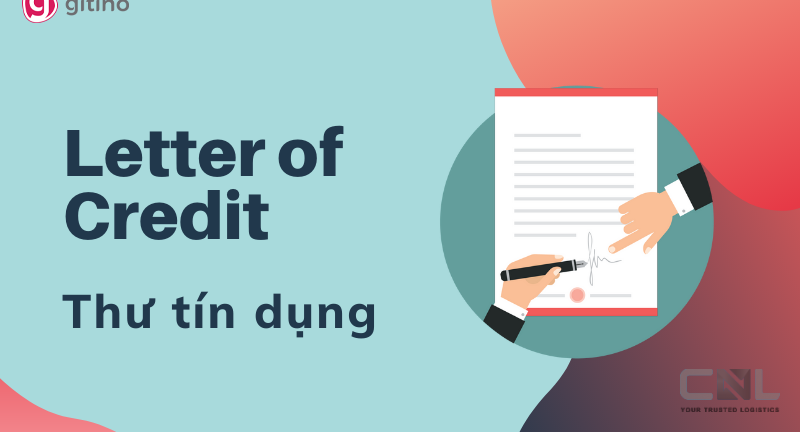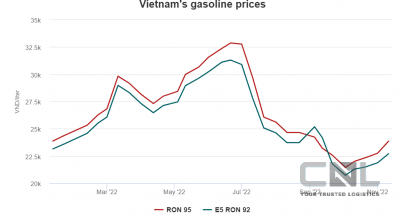The content of the article was expertly advised by Mr. Hoang Thi Le Huyen - Master of Economics of Toulonvar University of France, Lecturer of Practical Import and Export Course at Le Anh Center in Hanoi.
There are now many different payment methods used between buyers (importers) and sellers (exporters), of which theletter of credit (L/C) payment method is the most commonly used.
Specifically, how letter of credit (L/C) payments are characterized makes them the most preferredpayment methodand what factors to know, notes when openingL/C. All will be in the article below.
1. The concept of letter of credit (L/C)
Letter of credit (L/C) is a popular form of international payment today, this is the form in which the Bank commits on behalf of the importer to the exporter/supplier of goods to pay within the specified time when the exporter/supplier presents documents in accordance with the provisions in L/C that have been opened by the bank. at the request of the importer.
2. Parties to the letter of credit (L/C)
-
Applicant: Buyer, importer of goods.
- Beneficiary: Seller, exporter of goods.
- Issuing bank: A bank representing importers that can grant credit to importers.
- Letter of Credit Notification Bank: Usually the correspondent bank of the bank that opens the letter of credit or the merchant bank.
- Confirming Bank, Negotiating bank, Reimbursing Bank: These banks may or may not be subject to the buyer's requirements in the L/Copening application and the L/Copen bank's mandate.
3. Nature of letter of credit (L/C)
First, document credit (L/C) is a payment method that involves presenting a valid set of documents. The seller will be guaranteed payment if he presents at the bank a set of documents in accordance with the regulations. The L/C payment methodcan also be interpreted as an advance that the bank gives to the importer or exporter.
From the nature of this letter of credit can be inferred:
-
Firstly, only credit institutions have the right to carry out these transactions.
- Secondly, due to the monopoly of the bank, this payment transaction can only be made regularly by credit institutions.
4. Meaning of L/C payment method
- Is a commitment to pay or accept payment rather than a promise .
- Issued by one issuer but possibly to one or more beneficiaries, the issuer of this document must be a commercial bank.
- The basis for payment of commercial L/C is the documents stated in the L/C.
- Is a conditional and time-bound commitment to pay.
- It is chosen by many companies and banks because it meets the main requirements of international trade:
- Because partners who sign contracts with those based in different countries have a lack of mutual trust, L/C payment eliminates that barrier.
- In transactions in L/C, there is always the presence of the representative bank of the two partner parties along with strict requirements on the set of documents that will reconcile the opposing interests between the parties involved. short-term accounting
Risks and precautions when using L/C:
-
Check the accuracy of the document must matchthe LC
- The bank only checks documents and does not check the goods, so the goods may still not be of the right quality.
- The buyer still has to deposit a sum of money (even 100% of the contract value)
5. Types of letters of credit (L/C)
There are usually 4 most common types ofletters of credit:
-
Revocable L/C: This is a type of letter of credit that, once opened, can be made unilaterally.
- Irrevocable L/C: A letter of credit after it has been opened, the change, addition or cancellation is carried out only by the bank in accordance with the agreement of all parties involved In international trade this letter of credit is most commonly used.
- Confirmed irrevocavle L/C: A type of irrevocable letter of credit, guaranteed by another bank to pay at the request of the bank opening the letter of credit.
- Transferable L/C: A type of irrevocable letter of credit, which provides for the right of the paying bank to pay in full or part of the correspondence to one or more persons at the behest of the first beneficiary.
There are many more, however, banks now often use irrevocable L/C. But it should be noted that if L/C does not specify that L/C is "irrevocable" or "revocable", it is Irrevocable i.e. not cancelled. Similarly, if L/C does not specify L/C "confirmed", then it is L/C "inconfirmed" i.e. there is no confirmation.
6. The main contents of the letter of credit (L/C).
There are many different types of L/C, but in general they usually have the following basic contents:
(1) No of L/C, place and date of issuing.
-
Number.
- Place of issuing: A place where the L/C open bank makes payments to exporters.
- Issuing date: The date on which the open banking commitment to the exporter arises, which is the effective date of the LC and is the basis for the exporter to check whether the importer has opened the L/C on time as specified in the contract.
(2) Type of letter of credit.
Each type of L/C has different nature and content The rights and obligations of the parties involved are also different, so it is necessary to determine the type of letter of credit to open.
(3) The name of the beneficiary's address.
Related to the method of document credit.
(4) The amount of the letter of credit.
The amount of the letter of credit (Amount of money) is both numeric and written in uniform letters or can be just a numerical amount. Where the payment currency must be clear. The best way to write the amount is to write down some limits that the exporter can set. The words "approximately, approximately" or similar words are used to refer to the amplitude of the amount of L/C that allows no more than 10% of the total amount.
(5) Expiry date.
It is the deadline that the L/C open bank commits to pay the exporter if the exporter presents a full set of documents within that period and within the required L/C content.
(6) Latest payment date.
Is the deadline to pay now or pay later. This can be identified in the exchange note of the exporter who signs the delivery deadline also stated in the L/C and is stipulated by the contract of sale. Delivery deadlines may be closely related to L/C validity periods.
(7) Shipment date.
The deadline stipulates that the seller must transfer the goods to the buyer from the effective date of the L/C.
(8) Description of goods.
Including the name of goods, quantity of goods, weight of goods (may include wrong orders) price, specifications, quality ... must also be recorded in the letter of credit.
(9) Contents of Shipment term.
(10) Documents for payment must be presented by the exporter.
This is the key content of the letter of credit, because the set of documents specified in the letter of credit is a proof by the exporter that he has fulfilled his or her delivery obligations and complied with the provisions of the letter of credit.
(11) L/C open bank payment commitment.
It is the final content of the letter of credit and it binds the responsibilities of the open bank L/C.
(12) Other special conditions.
Such as which party the bank fee is charged to, special conditions guide for the discount bank, which UCP reference....
(13) Signature of the open bank L/C.
7. L/C opening conditions
To open L/C, enterprises must submit the following documents to the bank:
-
Business registration certificate
- Foreign currency account at the Bank (to open an account must close at least 500 USD to the account to be opened) along with the following documents:
- Decision on the establishment of the Company
- Decide on the appointment of the Director and Chief Accountant.
8. How to open L/C
The documents that need to be submitted when you go to the Bank to open L/C for each type of L/C, there will be different accompanying documents. But L/C applications of corporate clients often include the following specific documents:
-
L/C Open Petition.
- Decision to establish a business (for first-time trading enterprises).
- Business registration (for first-time trading enterprises).
- Registration of import and export code - if any (for first-time trading enterprises).
- Original foreign trade contract (in case of signing a contract via FAX, the unit must sign and stamp on the photocopy).
- Entrusted import contract (if any).
- Import license of the Ministry of Commerce (if the imported item belongs to the management list specified in the Annual Import and Export Management Decision of the Prime Minister).
- Payment commitment, Credit contract (in case of loan), approval letter for opening L/C deferred payment of SBV (in case of opening L/C deferred payment).
- Foreign currency purchase and sale contract (if any).
- The L/C open explanation prepared by the Branch's Credit Department is approved by the Branch Director or a person authorized by the Director (in case the margin is less than 100% of the L/C value).
All of the above documents must present the original and save the copy branch with the hanging stamp of the enterprise. Particularly the following documents will have to save the original:
-
Payment commitments.
- Loan agreement.
- Foreign currency purchase and sale contracts.
- The client's L/C open application.
- Open Explanation L/C.
Note when applying to open L/C:
-
The basis for writing an application is a signed foreign trade purchase contract, but the importer can add some contents in his favor.
- The application must be signed by the Director and Chief Accountant of the importing unit. If implementing a entrusted import, the L/C opening application must have all 4 signatures: the signature of the Director and Chief Accountant of the entrusted importer and the signature of the Director and Chief Accountant of the trustee.
- To avoid time-consuming and costly L/C modifications, importers can fax the L/C open application to the exporter for preview and consultation.
- Importers should review the original L/C and recommend modifications if necessary to protect their rights.
9. L/C Open Margin
a, L/C open margin content.
Currently, banks stipulate the deposit rate (100%; less than 100% or no deposit) for importing enterprises based on:
-
Payment reputation of the business.
- The relationship of the business to the bank.
- Foreign currency balance on the account of the enterprise.
- Debts of importing enterprises.
- Feasibility in the import business plan of the importer.
b, How to deposit.
- If the customer's deposit account balance is greater than the deposit amount, the bank will deduct from the deposit account to the escrow account. The import department directly makes the L/C open deposit transfer slip and then transfers it to the Accounting Department for implementation.
- If the deposit account balance is less than the deposit amount, settle in the following two ways:
-
Buy foreign currency for margin.
- Foreign currency borrowing for margin.
10. Payment of L/C opening fee
L/C opening fee depending on the level of margin made by the importer: Example: At Vietcombank
Signing the L/C Opening Fee:
-
If the margin is 100% worth L/C 0.075% the value of L/C is open.
- If the margin is 30 - 50% worth L/C 0.1% worth the open L/C.
- Less than 30% worth of L/C 0.15% of open L/C value (min 5 USD and max 200 USD).
- Free deposit 0.2% of open L/C value (min 5 USD and max 300 USD).
- When opening late payment L/C: there must be a bank guarantee, so importers must pay an additional 0.2% - 0.5% per quarter depending on each imported item.
Above is the main information about the payment method of letter of credit (L / C), hope the sharing on this article will be useful to you!
Mr. Hoang Thi Le Huyen -xuatnhapkhauleanh.edu.vn










